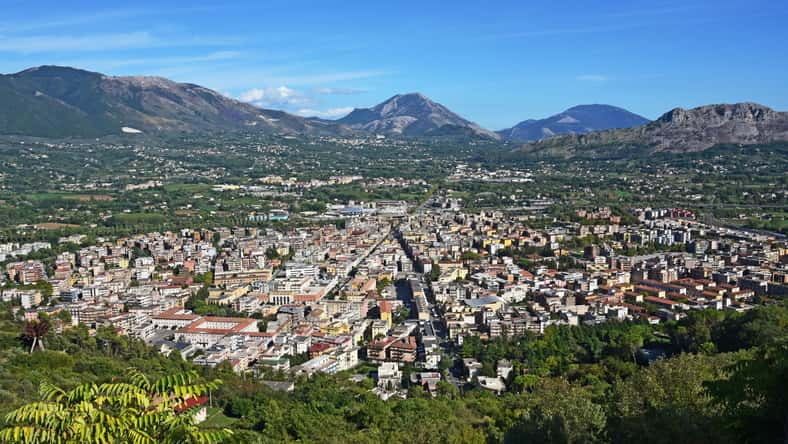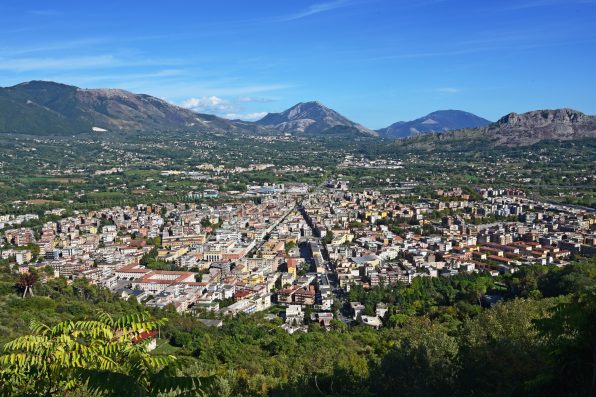Archaeologists Have Uncovered New Evidence That Rivals Old Beliefs About The Downfall Of The Roman Empire In A “Backwater” Central Italy Town Previously Thought To Be “Unpromising”

In a once overlooked “backwater” town that was written off as “unpromising,” researchers have discovered new evidence that challenges previously held beliefs about the downfall of the Roman Empire.
For thirteen years, a team of archaeologists from the University of Cambridge has been conducting surveys and excavations in Interamna Lirenas, an ancient Roman settlement located in central Italy.
The latest findings indicate that the town continued to prosper well into the third century A.D., which is considered to be when Italy began experiencing a decline.
According to Alessandro Launaro, a researcher at the University of Cambridge and leader of the excavation project, the town seemed to be rather ordinary.
“It was of average size and occupied a middling position in the settlement hierarchy—it is therefore likely to be more representative of a large number of towns which dotted Roman Italy and the empire at large,” he said.
It was assumed that the state of the town had started to take a nosedive by the end of the first century B.C. However, recent discoveries have shown that Interamna Lirenas was actually “complex, monumental, and articulate” during that time.
It peaked in the second century B.C. and was still flourishing in the third century A.D. As time went on, the population diminished until the town was completely deserted in the later sixth century A.D. In the third century, the Roman empire itself nearly collapsed due to invasions, war, plagues, and economic crises, but it had already been showing signs of trouble earlier on.
Laurano believes that Interamna Lirenas adapted to the challenging conditions by building a strong network of relationships in the political, social, and economic realms, which was how they thrived before the rise of the Roman Empire and survived after its fall.
The analysis of Interamna may provide a better understanding of how other communities in Italy managed to overcome troubling times.

robertovell – stock.adobe.com – illustrative purposes only
Using a variety of archaeological techniques, Laurano and his team were able to figure out the town’s true identity and learn how it remained so resilient. They used ground-penetrating radar surveys, launched a series of targeted excavations, and analyzed pottery pieces.
After doing a systematic geophysical survey, they created a detailed picture of the town’s layout. The image revealed notable characteristics of the area, such as a roofed theater, spaces for markets, temples, storage facilities, bathhouses, and a river port.
It was far more elaborate than what the researchers had expected to find, especially since when they first started digging, the area was just open fields and contained no noticeable remains.
“There was nothing on the surface, no visible evidence of buildings, just bits of broken pottery. But what we discovered wasn’t a backwater, far from it. We found a thriving town adapting to every challenge thrown at it for 900 years,” said Laurano.
The remains of the roofed theater were a particularly surprising discovery because theaters were rare in Roman Italy. This theater appeared to have been large enough to seat around 1,500 people and was constructed with marble that was imported from across the Mediterranean.
The presence of a roofed theater debunks the idea that it was a backwater town. Instead, it shows that the town had a lot of wealth, power, and refinement. Evidence suggests that the theater was still open even as the empire started going downhill.
Another shocking revelation was the town’s population size. Over 80 percent of the town’s houses were small, with two dozen larger ones sprinkled throughout the settlement. It is believed that the town operated as a major trading center and was able to uphold its reputation as such, bringing in business even when the state of the empire was looking dim.
Sign up for Chip Chick’s newsletter and get stories like this delivered to your inbox.
More About:News